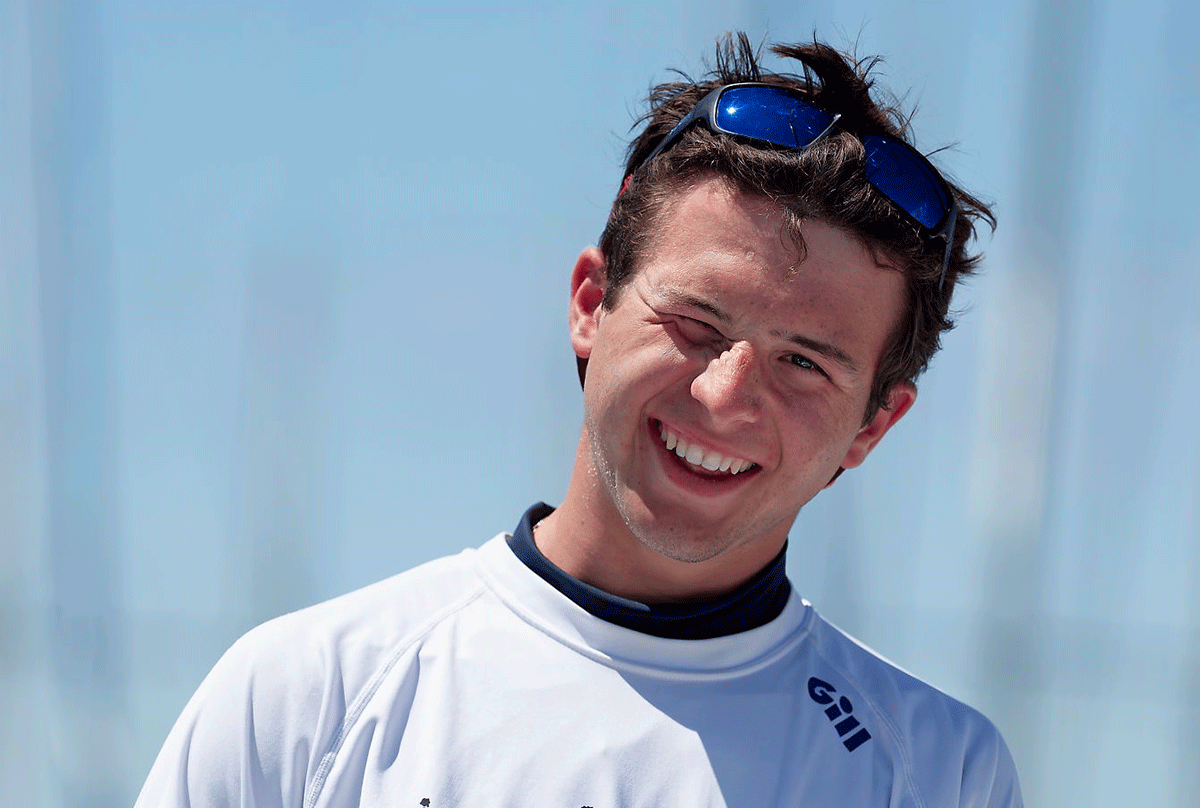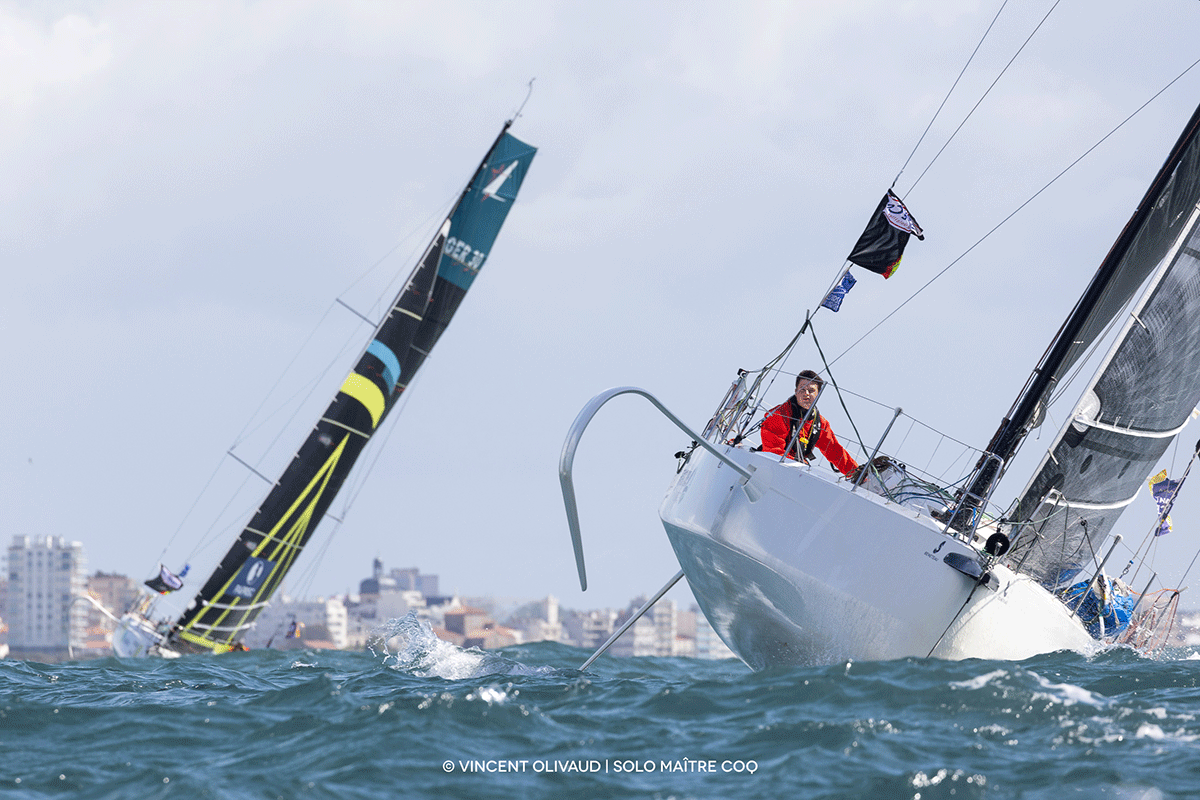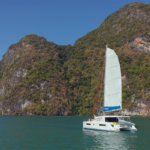Timothy Long, offshore racer and the youngest person to sail solo around Britain.
AAS: IN 2020 YOU BECAME THE YOUNGEST PERSON TO SAIL SOLO AROUND BRITAIN. WHAT WERE THE MOST IMPORTANT LESSONS YOU LEARNT?
TL: I suppose the first lesson I learnt was the importance of preparation. In the lead up to my trip, although Covid prevented much of the on-water training, I still did everything I could to prepare. From completing the RYA theory navigation courses, planning my route and stops to preparing the boat as much as possible. The same process was repeated before each leg of the trip, and I am sure that this was the main reason I succeeded.
Second, self-awareness keeps you safe. At the age of 15, I knew that I did not have a lot of experience, and so I set a strict limit of not setting out in more than a F5. I transferred the same concept into how I sailed the boat (reefing early for example), to minimise the risks wherever possible. Of course, that said, at times I was forced to push myself and the boat beyond our limits – but that is the nature of sport and improvement.
Linking to my second point, Round Britain pushed me past my mental and physical boundaries and into new levels that I never thought I was capable of. This was such a lesson in teaching me to believe in myself and my ability.
AAS: IN 2023, AGED 18, YOU FINISHED YOUR FIRST PROFESSIONAL SOLO OFFSHORE RACE IN THE FRENCH FIGARO 3 CLASS. HOW DID THAT FEEL AND WHAT IS THE ATTRACTION OF SOLO RACING?
TL: Incredible! Having spent 2022 training and working alongside the solo Figaro skippers, it felt like a huge achievement to complete a first solo race in the class myself. The Figaro fleet is known to breed some of the best offshore sailors in the world – every Vendée Globe winner since 1992 has previously sailed in the fleet – so it was a privilege to compete at that level.
Solo sailing is a very raw side of our sport. It is full of challenges of endurance, resilience and decision making, and there is nowhere to hide. What I love is that on the water you are forced to build a whole portfolio of practical skills, as well as strong mental qualities… because at the end of the day, you can only rely on yourself.
AAS: HOW HAS THE RACING GONE SO FAR THIS YEAR?
TL: Racing this year has been exceptionally hard! First was the Solo Maître CoQ, a 350nm solo race. I was super excited to be out there, the start was intense in 20+ kts up to the windward mark followed by a long downwind to the Ile de Ré bridge. It was great!
Then, late in the afternoon I discovered that the port side D2, a piece of rigging required to tension and hold up the mast, had broken. Unfortunately, I was forced to retire for fear of losing the rig. It was a painful decision, but the right one… as I turned around to head home, I could visibly see the mast swaying strangely from side to side.
Then there was the Trophée BPGO, an 800nm double-handed race around the north and west coast of France. Going into the race I was nervous – it was my longest ever time at sea, and the coastal/tidal aspects of the course made it a really challenging event.
However, after almost six days of racing we finished and what a great learning experience it was. I sailed the race with Camille Bertel, an accomplished French sailor who had two transatlantic races behind her already, and so I was able to learn a lot from her.
I then had a quick turnaround before the Le Havre Allmer Cup, a 400nm solo race. The lead up was accelerated, having to squeeze in the 300nm delivery and preparations into a six-day turnaround. But, going into the event I felt prepared and looked forward to applying my learning from the Trophée BPGO.
I started well, but unfortunately not long after the start I was involved in a head on collision with another boat, and the damage incurred meant that we could no longer continue. Thankfully, no one was hurt, but I was totally devasted. I just simply could not believe it. For this to happen in my first season felt like a huge setback and hit my confidence and emotions hard.
However, as devastating as it was, crashes do happen in our sport, and it was a valuable experience which I think has further built my emotional maturity as a sailor.

AAS: TELL US ABOUT YOUR BOAT.
TL: The boat I sail is a foiling, one-design Figaro 3. Each boat is exactly the same, which results in fast, intense racing with results being separated by seconds.
AAS: CAN YOU GIVE AN EXAMPLE OF THE CHALLENGES YOU FACE IN OFFSHORE RACING?
TL: The need to persist. Offshore races are long! In the Figaro fleet we mostly race for between two to six days at a time. At times, it is so hard to keep going and to motivate yourself to continue pushing yourself and the boat. You are forced to learn how to persist through the ups and downs of a race.
AAS: WHEN WE SPOKE TO YOU FOR THIS PAGE IN 2020 YOU SAID YOU WOULD “LOVE TO RACE ACROSS AN OCEAN AT SOME POINT, AND EVENTUALLY CIRCUMNAVIGATE THE GLOBE”. IS THIS STILL YOUR MAIN GOAL?
TL: Yes! But I have realised that getting there is a more complex path than simply sailing in the right fleets for long enough. It is a personal journey, where you have to be true to yourself, learn from experiences and build up a vast portfolio of skills.
AAS: WHAT IS STILL TO COME THIS YEAR?
TL: I will be competing in some further double-handed events in the UK/France and will be involved in the Solitaire du Figaro… although unfortunately not as a skipper this year.
AAS: DO YOU FOLLOW/PLAY ANY SPORTS OUTSIDE OF SAILING?
TL: I climb and I follow all sports, but particularly tennis and rugby. I am a big supporter of Emma Raducanu, her persistence has been inspiring.
AAS: WHAT’S THE LAST THING YOU WATCHED ON TV?
TL: Casualty, with my mum!















